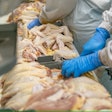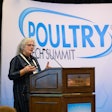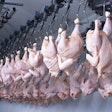
The GenomeTrakr is a database that collects and shares the genomes of foodborne pathogens worldwide to help facilitate microbiological testing and improve food safety efforts.
“The idea behind the GenomeTrakr is that pathogens like Salmonella, Listeria and E. coli have genomic signatures that are often associated with a commodity or a particular part of the world,” Dr. Eric Brown, Director of the Division of Microbiology, Food and Drug Administration (FDA) - Office of Regulatory Science, said March 31 during a webinar called Whole Genome Sequencing: Regulatory Applications.
The information on the more than 426,000 isolates and 300 genomes that have been sequenced by the GenomeTrakr network is housed in public databases at the National Center for Biotechnology Information (NCBI). This data can be easily accessed by researchers and public health officials and provides real-time comparison and analysis to speed foodborne illness outbreak investigations.
“Using whole genome sequencing out of a database like this allows us to have access to a much larger set of data where everyone can contribute and share their data openly if they're willing. This has helped us overcome a lot of issues of having a limited number of investigators, speeds up the time spent on things we want to pursue,” Brown added.
More than 48 million people get sick and 3,000 people die each year as a result of consuming food or beverages that are contaminated, according to estimates from the Centers for Disease Control and Prevention (CDC).
Whole genome sequencing
Microbiologists use a novel technique called whole genome sequencing that allows them to see the genomes of contaminated food samples match any of the genomes in the GenomeTrakr database.
Many foodborne illnesses are caused by bacteria, whose genomes are made up of somewhere between two and ten million nucleotides. Using whole genome sequencing, researchers can make a best match determination of which strain is responsible for an outbreak and match it to the source of contamination.
“Whole genome sequencing allows us to cut through the global complex nature of foods. If you take a spiced chicken breast, ingredients can come from multiple states or even multiple countries around the world through imports,” Brown explained.
Like what you just read? Sign up now for free to receive the Poultry Future Newsletter.


















